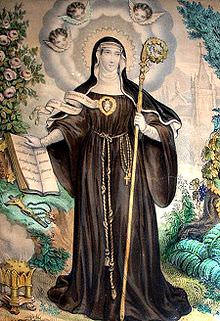Blood and body : women’s religious practices in late medieval Europe
Tudesko, Jenny L.
Thesis: M.A., History, California State University, Sacramento (2009)
Abstract
Religious women in thirteenth and fourteenth-century Western Europe developed forms of pious practice that were unique in their extreme devotions to the blood and body of Christ and unique in their use of their own physical bodies to practice these devotions. Thirteenth-century sources including works authored by Mechthild of Magdeburg, Gertrude the Great, and Angela of Foligno, as well as the late medieval biographies written by Thomas de Cantimpre and Jacques de Vitry demonstrate a form of female piety that included physical starvation, cutting, flagellation, and the prayerful welcoming of debilitating illnesses. Considered incapable of the intellectual devotionsof male mystics, women sought to grow closer to God through the physical imitation of Christ’s human suffering in the Crucifixion. Theologians criticized female practices as being lesser forms of devotion, but also recognized female practices as orthodox and sometimes used the lives and examples of holy women to support and promote the interests of the Church. Some recent writers have concluded that these’unique female devotions constituted an attempt to subvert the religious power held by men, however a contextual analysis of female piety indicates that women’s practices developed not as an attempt to gain power, but as a result of the restrictions inherent within misogynistic medieval culture.
Blood and body : women’s religious practices in late medieval Europe
Tudesko, Jenny L.
Thesis: M.A., History, California State University, Sacramento (2009)
Abstract
Religious women in thirteenth and fourteenth-century Western Europe developed forms of pious practice that were unique in their extreme devotions to the blood and body of Christ and unique in their use of their own physical bodies to practice these devotions. Thirteenth-century sources including works authored by Mechthild of Magdeburg, Gertrude the Great, and Angela of Foligno, as well as the late medieval biographies written by Thomas de Cantimpre and Jacques de Vitry demonstrate a form of female piety that included physical starvation, cutting, flagellation, and the prayerful welcoming of debilitating illnesses. Considered incapable of the intellectual devotionsof male mystics, women sought to grow closer to God through the physical imitation of Christ’s human suffering in the Crucifixion. Theologians criticized female practices as being lesser forms of devotion, but also recognized female practices as orthodox and sometimes used the lives and examples of holy women to support and promote the interests of the Church. Some recent writers have concluded that these’unique female devotions constituted an attempt to subvert the religious power held by men, however a contextual analysis of female piety indicates that women’s practices developed not as an attempt to gain power, but as a result of the restrictions inherent within misogynistic medieval culture.
Christ’s human suffering in the Crucifixion. Theologians criticized female practices as being lesser forms of devotion, but also recognized female practices as orthodox and sometimes used the lives and examples of holy women to support and promote the interests of the Church. Some recent writers have concluded that these’unique female devotions constituted an attempt to subvert the religious power held by men, however a contextual analysis of female piety indicates that women’s practices developed not as an attempt to gain power, but as a result of the restrictions inherent within misogynistic medieval culture.
Click here to read this article from California State University
Subscribe to Medievalverse
Related Posts